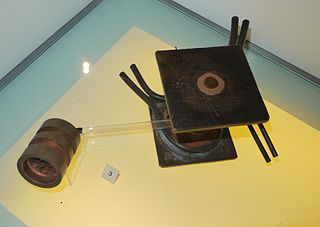by Larry Phillips (Atlanta Science Tavern contributor)
In September of 1940 the British scientist Henry Tizard arrived in Washington DC on an official visit. Tizard had with him a carefully packed trunk containing a device that an American official later described as “the most valuable cargo ever brought to our shores”. The device was a top-secret invention called the “cavity magnetron”, and it was the key to making radar workable. Tizard’s mission was to persuade the US military to fund further development of magnetron-based radar.
To understand the cavity magnetron’s role in radar technology, let’s review what an effective radar system needs. First, radar determines the range of a target by timing how long it takes for a transmitted radio pulse to bounce off the target and return to the source. If this faint echo is to be detectable, the outgoing pulse must be quite powerful– ideally, thousands of watts of power.
Second, the pulse needs to be sent out in a narrow beam. Otherwise, we will not know the direction of the target. A typical radar system scans across the horizon, continuously sending out its narrow beam of pulses. When an echo comes back, we know that the target is in that direction. Because of the way radio waves work, a narrow beam can only be produced if the radio waves are of very high frequency (or equivalently, of short wavelength). High frequency radio also has the advantage of bouncing more readily off small objects, such as airplanes.
These two requirements, high power and high frequency, presented a technical problem that vacuum tubes and other devices could not solve. The magnetron met both these requirements. Indeed, the American scientists who tested Tizard’s device were astonished to find that it produced 1,000 times the power level of anything they had.
The Americans wisely accepted the Tizard offer, and they began a large-scale effort to exploit the magnetron breakthrough. In time, this effort rivaled the Manhattan Project in size, and it resulted in American and British radar that was much better than their German and Japanese counterparts had. Airborne radar was so sensitive that it could detect submarine periscopes, and shipping loses to German submarines declined dramatically.
Even so, radar had produced its biggest impact on the war before Tizard arrived in 1940. The British had fended off the German bombing campaign in The Battle of Britain largely because their radar had enabled them to have their fighter planes in the air when the German bombers arrived over the English Channel. Fortunately, the Nazis never understood how good the British radar was; they were simply baffled by how Britain’s small air force was able to down so many of their bombers.
In the 72 years since Tizard’s visit, the cavity magnetron has gone from super-secret war weapon to commonplace: every microwave oven uses one to produce its microwaves.
Larry Phillips is a former electrical engineer and software developer at Lucent Technologies and Bell Laboratories. He now tutors students in mathematics and physics, writes a blog on mathematics at BrightStarTutors, and is author of a forthcoming book titled The Elementary Mathematics of Gravity.

